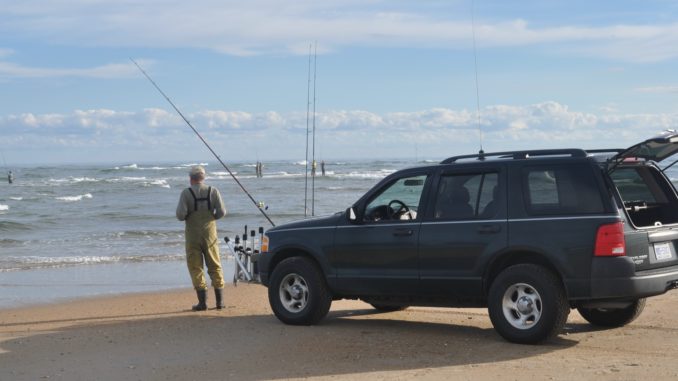
Beach-access supporters cheer work of North Carolina’s congressional delegation
North Carolina’s surf fishermen, tourists, residents and businesses along the Cape Hatteras National Seashore received some good news earlier this month regarding a potential rollback of onerous beach-access restrictions. On Dec. 4, 2014, the U.S. House of Representatives passed a bill that was part of a public-lands package, and then on Dec. 12, the U.S. Senate passed its version, which included a major change to an unpopular Off-Road Vehicle Plan. All that is needed now is President Barack Obama’s signature.
“The passage of the Cape Hatteras bill represents a major milestone in our fight to properly balance visitor recreational and resource protection goals within the seashore,” said David Scarborough, the treasurer of the Outer Banks Preservation Association treasurer. “It’s been a rocky road to navigate, and we thank our membership for their encouragement and support over the years. We know they’re happy with the progress this legislation represents.
“We can’t overstate our gratitude to Congressman Walter Jones Jr., and Senators Richard Burr, Kay Hagan and Elizabeth Dole for their years of undying commitment to our cause.
“The satisfaction, relief and sense of accomplishment we feel today is tempered by the realization that much work is still ahead to execute the new law and to accomplish its objective. We look forward to working with the new superintendent to make Cape Hatteras the best seashore recreational area in the nation.”
The Senate bill that included the Cape Hatteras changes was part of the Defense Authorization Act that passed the Senate by an 89-11 vote.
The Senate legislation requires the U.S. Secretary of the Interior to review and change wildlife-protection buffers – keeping them in place for the shortest-possible times – figure out vehicular and pedestrian routes around closed areas and confer with North Carolina about other buffers and protection areas.
Most important, it required other changes to the 2012 “Final ORV Plan” that supplanted a more-amicable 2007 Interim Plan, which allowed the National Park Service Superintendent, working with local citizens and pro-access groups, to set management restrictions and openings for beach access by ORV users and pedestrians that at the same time protected sea turtle and shorebird nesting areas.
The 2007 plan was overturned by a federal judge as a result of a lawsuit by The Audubon Society and Defenders of Wildlife. The suit charged that the 2007 plan didn’t do enough to protect turtles and shorebirds.
The 2012 plan closed down many Cape Hatteras beaches to human access from March through August, prime tourist and fishing months. Falls closures soon followed as the 2012 plan, and, for the first time, required ORV users to purchase either a 7-day beach-driving permit for $50 or annual permit for $120.
The beach-access reduction, which curtailed visits by tourists and anglers, had devastating effects on the seven villages along the seashore, particularly motels, hotels, real-estate businesses that rented beach cottages and homes, restaurants, tackle shops, plus dozens of ancillary businesses.
Other modifications to the final ORV plan included a public process to consider changes such as earlier opening of beaches closed at night during the summer, lengthening ORV routes in the fall and spring, and changes to the sizes and locations of vehicle-free areas.
The U.S. Secretary of the Interior must report to the Congress within a year on the measures taken to implement the legislation.



Be the first to comment